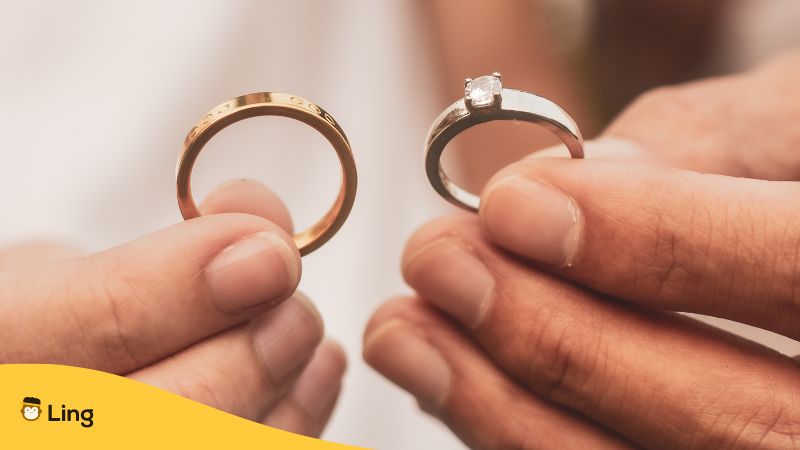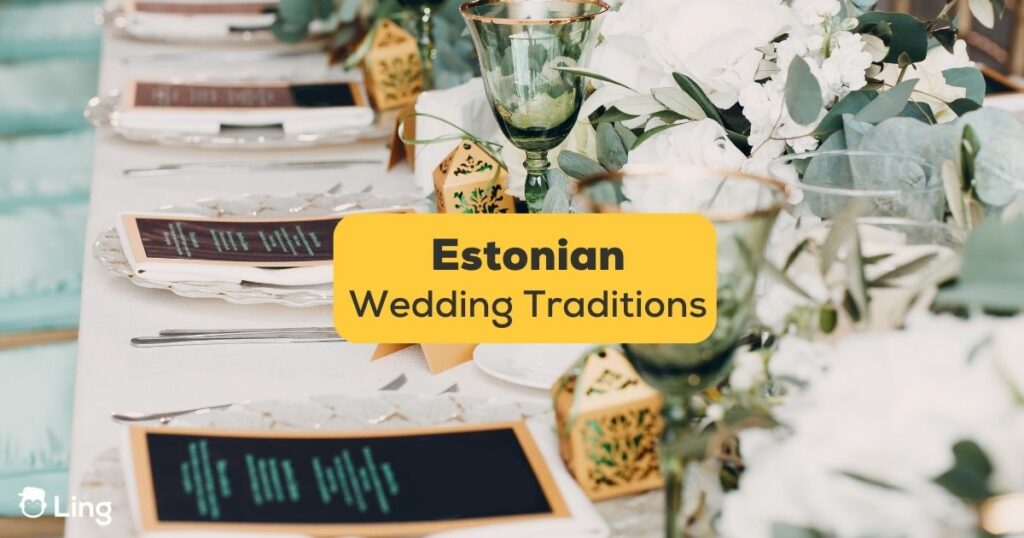Wondering about Estonian wedding traditions? I have been there (not at a wedding with the bride and groom), but imagining myself as a guest witnessing the traditional wedding traditions in Estonia. This may be part of what we must go through when planning a trip, especially somewhere we are unfamiliar with. Let me share the facts and trivia I’ve gathered about marriage, wedding ceremonies, bride and groom traditions, and other things that make an Estonian wedding ceremony interesting.
The Wedding Customs In Estonia
Estonian matrimony begins with a mix of modern courtship and old matchmaking. While modern couples meet through social circles and online platforms, traditions like family introductions and community involvement persist. This fusion reflects Estonia’s progress while honoring family bonds and shared values.
Engagement rings hold deep symbolism in Estonian culture. These intricately designed rings symbolize commitment and unity. Exchanging these precious tokens signifies not just love but also a connection to generations past.
But before we go and discuss further, let’s first focus on some Estonian words related to weddings.
| English | Estonian |
|---|---|
| Wedding | Pulm |
| Bride | Pruut |
| Groom | Peigmees |
| Marriage | Abielu |
| Engagement | Kihlus |
| Ring | Sõrmus |
| Ceremony | Tseremoonia |
| Reception | Vastuvõtt |
| Toast | Tervitus |
| Invitation | Kutse |
| Honeymoon | Mesinädalad |
| Vows | Lubadused |
| Bridesmaid | Pruutneitsi |
| Best Man | Peiu |

Traditional Wedding Costumes And Their Symbols
The bride’s dress at an Estonian wedding tells a story of tradition and symbolism. The detailed gown, with unique patterns and colors for each region, represents Estonian heritage’s diversity. Adorned with fresh flower crowns, the bride embodies nature’s beauty and the sanctity of marriage. The inclusion of specific embellishments, such as lace or embroidery, may reflect familial or regional traditions. The gown’s train and veil can symbolize protection and modesty, while something borrowed, such as a family heirloom, connects the bride with her past.
The groom’s suit, although generally more understated than the bride’s gown, carries its own set of symbolic meanings. A well-tailored suit symbolizes responsibility and commitment, reflecting the groom’s readiness to step into the role of a husband. Specific accessories like a boutonniere, often a single flower, can mirror the bridal bouquet and represent unity.
The attire of wedding attendees often follows a specific dress code or cultural norm, reflecting the formality and nature of the occasion. Traditionally, guests are expected to wear clothing that respects the solemnity and joy of the occasion. For instance, bright colors and festive attire may be encouraged at a lively celebration, symbolizing joy and happiness. In contrast, more subdued colors and conservative styles might be preferred at a traditional or formal wedding.
Wedding Elements
Here are the other traditions that are frequently part of the local wedding traditions:
The Grand Entrance
The ceremony is not always serious. The procession, accompanied by traditional tunes, signifies the couple’s entrance with their families. This ritual walk marks the beginning of a new phase where two families come together to support the couple’s union.
Exchange Of Vows
At the heart of the ceremony, vows and rings are exchanged, signifying the declaration of commitment and affection of the groom and bride. With each promise made and ring swapped, the couple confirms their love before their parents and guests.
Handfasting Rituals
An exclusive aspect of weddings in Estonia is the handfasting ritual. A ribbon, symbolizing unity, is intricately wound around the hands of the newlyweds, tying them together. This practice brings a sense of connection beyond the physical, representing the strength of their partnership.
Estonian Wedding Traditions Regarding Food
The feasts during the reception present an array of flavors that honor the region’s culinary legacy. Dishes like “kama,” a hearty porridge, and “mulgipuder,” a potato-based delicacy, showcase the combination of simple ingredients with a delightful taste. These culinary treats nourish not just the body but also reflect how the couple is connected to their origins.

More Traditions After The Wedding
Here are some of the things to expect after the ceremonies of a traditional Estonian wedding:
Post-Ceremony Well-Wishes
After the wedding ceremony, there’s a heartfelt outpouring of well-wishes and blessings for the newlywed couple. Guests raise their glasses in toasts, sharing words of love, happiness, and a life lived together in harmony.
Symbolic Activities
Estonian weddings are known for joyful and symbolic activities that bring families and guests closer. Traditional dances like the “polska” invite everyone to join in the fun. Games such as the “bread dance,” where guests showcase their dance skills for a piece of bread, add a playful touch while building bonds.
The “Bride Kidnapping”
A light-hearted and whimsical tradition, the “bride kidnapping” involves playfully “abducting” the bride during the festivities. The groom and guests embark on a playful mission to bring the bride back, often involving challenges, performances, or riddles.
Giving Of Gifts
In Estonian weddings, giving gifts is a cherished custom that reflects the couple’s journey and cultural heritage. Traditional gifts might include embroidered textiles, hand-carved wooden items, or items of regional significance, each a testament to the giver’s heartfelt intentions.
Understand The Tradition And Fun By Learning The Language
Estonian may be a challenging language to learn, but it can be done as long as you practice regularly. You can do it faster and more efficiently with the help of a language-learning app called Ling. It’s available for download on Play Store and App Store. Once installed, it can help you learn and expand your Estonian vocab.
Enjoyed this post? If you want to learn about weddings and traditions in other countries, check out our write-ups on Korean and Armenian weddings.



































































